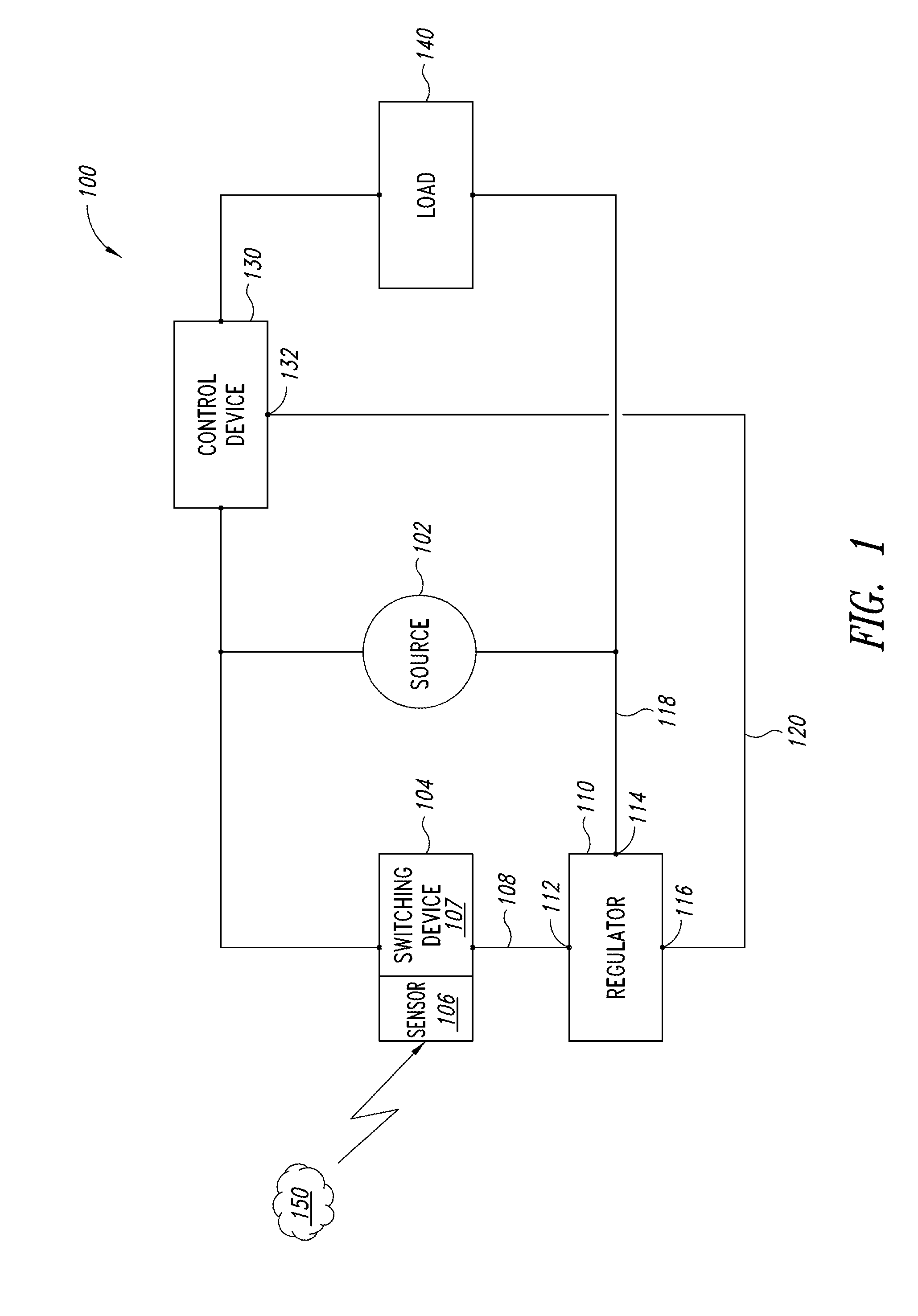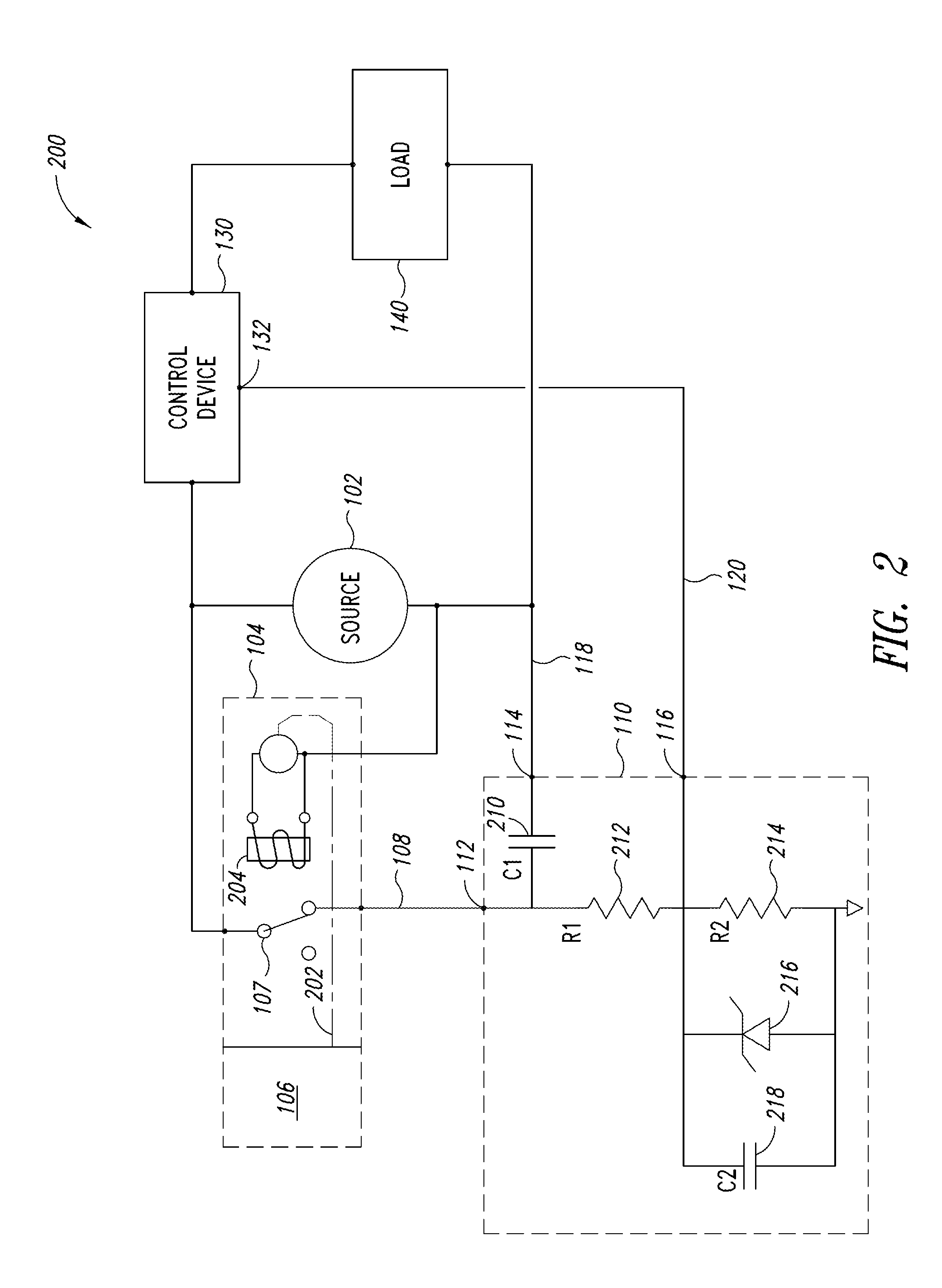Systems, methods, and apparatuses for using a high current switching device as a logic level sensor
a switching device and logic level technology, applied in the field of electric converters, can solve the problems of inability to provide satisfactory or reliable operation of the replacement electrical device, inconvenient replacement of the line voltage switching device with the low voltage switching device, and inability to use the electrical contacts used in at least some line voltage switching devices such as high current relays or contactors, so as to achieve reliable detection of the operating state of the switching device and preserve energy efficiency
- Summary
- Abstract
- Description
- Claims
- Application Information
AI Technical Summary
Benefits of technology
Problems solved by technology
Method used
Image
Examples
Embodiment Construction
[0026]In the following description, certain specific details are set forth in order to provide a thorough understanding of various disclosed embodiments. However, one skilled in the relevant art will recognize that embodiments may be practiced without one or more of these specific details, or with other methods, components, materials, etc. In some instances, well-known or well-documented electrical components such as capacitive devices, resistive devices, diodes and the like have either not been shown or shown in an abstract manner and have not been described in detail to avoid unnecessarily obscuring descriptions of the embodiments. In other instances, well-known or well documented electronic systems such as environmental sensors, voltage sources, switched-mode power supplies, and solid state lighting devices have either not been shown or shown abstractly and have not described in detail to avoid unnecessarily obscuring descriptions of the embodiments.
[0027]Unless the context requi...
PUM
 Login to View More
Login to View More Abstract
Description
Claims
Application Information
 Login to View More
Login to View More - R&D
- Intellectual Property
- Life Sciences
- Materials
- Tech Scout
- Unparalleled Data Quality
- Higher Quality Content
- 60% Fewer Hallucinations
Browse by: Latest US Patents, China's latest patents, Technical Efficacy Thesaurus, Application Domain, Technology Topic, Popular Technical Reports.
© 2025 PatSnap. All rights reserved.Legal|Privacy policy|Modern Slavery Act Transparency Statement|Sitemap|About US| Contact US: help@patsnap.com



